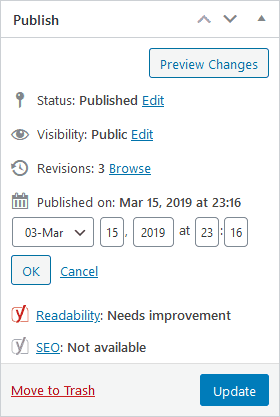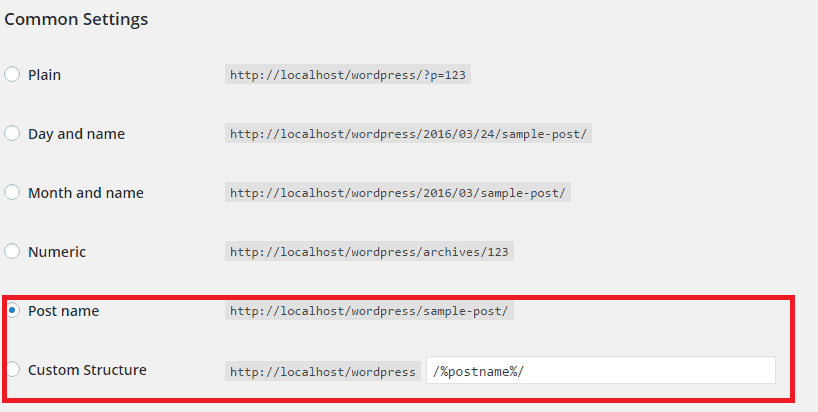Bloggers and affiliate marketers new to the game may often wonder whether it is a good idea to update the content on your site, and if so how to do it and how often.
This can actually vary depending on the niche you are in, but in general updating content is not a bad thing.
It is almost always an excellent idea to update and improve upon content you have already published. Googles constantly comes back to check for any updates you may have made and likes content which is kept fresh and relevant, especially in niches which are more dynamic and less evergreen.
Never miss an opportunity to update content on your site as it can be an important factor in ranking. Google likes to see bloggers and affiliate marketers who are constantly coming back to update their content to keep it up to date, as well as publishing more content on their site on a regular basis.
There are however some precautions to take when doing this. Let’s look at the issue in more detail.
Google Likes Newer Dated Content
Google does give preference to newer content that has been published more recently. If there are two articles that are deemed to be of similar quality, but one is newer, there is a good chance the newer post will get preference in the ranking.
That does not mean to say that old articles cannot stay at the top of the rankings; they definitely can. In researching articles for this site I found some number one ranked articles that were more than ten years old.
This only tends to be the case though if no one has come in and produced a better resource for that search term in the meantime. In this sense it is largely down to competition and luck whether older articles stay at the top of results.
If you are in a low competition field and there are not many other sites in your niche then it may well do, since there is not much content being produced to compete with it.
However, it is not a good idea to rely on this and whenever you have ideas on how you can update and improve upon content you have already published, it is definitely worth going back and updating it.
If you make significant changes to your post then update the published date on the right hand side menu to make it clear to Google that this is updated content.
It will re-index the page and rank it accordingly. Anything you can do to add to the factors which help an article to rank, such as add length or make it more useful and definitive, is always a good idea.

Updating the publication date of a post is often a good idea as long as you have made significant changes.
Updating Content in Evergreen vs Non-Evergreen Niches
This is an important distinction to make – is the general niche of your blog more evergreen (constant over time) or non-evergreen (constantly changing over time)? This has a big impact on the importance of updating content.
Let’s start with evergreen niches. The information in these topics tends to be more “set in stone” and decided, and isn’t really going to change with the passage of time.
Here are some examples of evergreen topics:
- Mathematical theorems
- Other hard sciences theories
- Outdoors topics (sports, gardening)
- History that happened a long time ago
- Languages
- Other non tech hobbies, where the equipment/methods rarely change from one year to the next.
In these topics, updating content is less important, but still useful when relevant.
Here are some examples of non-evergreen topics:
- Technology – a huge one – always changing every year. Phones, laptops, TVs etc.
- Fashion
- News
- Current politics
In these constantly evolving topics, you need to be constantly either updating content or putting out new content to stay relevant, since what you wrote even 6-12 months ago could be completely out of date.
In truth, many niches fall somewhere in between these two. Some content may maintain it’s relevance over time, whilst other content may need updating every year or two.
Either way, get a good idea of where your niche lies on the evergreen spectrum, and set a schedule to review and update your older content accordingly. See also our Battleship Method section further below.

Almost any content in the tech space needs updating regularly to stay relevant
Do Not Try To Trick Google With Updating
An important caveat to this though is to not try and trick Google by making tiny, insignificant changes and then updating the date of the post to make it appear newer. Google does not like this kind of trickery and can drop your article in the rankings if it catches you doing this.
Therefore it is important to only update the publish date if you have made significant changes to your content, adding or taking away chunks of text or putting in new features like images, tables, products and so on. Google likes to see this and will come back and re-index your new content.
However, if you are making small changes, correcting typos and very slight adjustments, then of course you can do this but it is best not to change the date of publication. You do not want Google to think you are trying to trick them and make your content appear newer than it is.
Setting The Correct Permalink Structure For Updating
If you plan to update your blog posts regularly, it is absolutely crucial for your SEO to set the correct Permalink structure in WordPress, to allow you to update content without changing the permalink of the article.
Unfortunately the default Permalink settings for WordPress currently set the post link structure to a Name and Date structure. eg.mynewnichesite.com/01/01/2021/my-latest-blog-post.
The problem with this is that if you update the publication date of the post, the date and therefore the URL of the article will change, meaning the old links with the old date will be broken.
From painful personal experience this is a very annoying thing to only discover after you have posted a bunch of content. If you update an article, all internal and external links to the article with the original date on them will now not work and deliver a 404 Page not Found error, which is a disaster for SEO and ranking.
Rather it is much better to set the Permalink structure to just the Post Name option, meaning it will display as mynichesite.com/my-latest-blog-post. This means that even if you update the publication date of the content, the permalink will stay the same.
To do this go to the Permalinks tab on the Settings page of your WordPress site and make sure permalinks are set to the Post Name option. This keeps article URLs simple and consistent over time, allowing for updating without any hassles.

Having the correct Permalink structure is crucial for SEO if you plan to update your content
Hopefully this is a setting you can change right away before you produce any content for your site. If you only find this out later on when you have already posted a bunch of content, there is a way to fix it but it will need some time and the use of a plugin.
See our article on Permalinks for more on this, if you realize you have the wrong link structure.
Keep Ahead of the Competition
If you are in a very competitive/non evergreen niche, then constantly updating your content can become essential to stay at the top of the rankings. This means pillar content needs updating at least for every new year and possibly even more frequently.
You will notice for some really competitive products, like digital products such as VPNs, content on the topic always states the year eg “Best VPNs 2021/22”. This is a reflection of how fast moving and competitive these markets are and so you always need to keep your content fresh and relevant.
In these kind of markets, having a post that is even a year or two old runs of risk of becoming out of date and irrelevant so you always need to keep updating this kind of content, or publishing new posts, to keep it relevant. Make sure your title of the content includes the current year if this is standard practice for your niche.
Some niches by contrast are more “evergreen”, with content remaining relevant for years after publication. This can be the case for more traditional or slower moving sectors where technological shift is either much slower or not so relevant.
In these cases updating content is arguably less important, but still worth doing if you have something relevant to add.
Similarly, some of the luckier niche site owners perhaps don’t have a lot of competition online yet in their field and are still earning good money off content they wrote some years ago because no one else has come along and produced better content.
Even if your niche is less competitive though and you don’t appear to have anyone trying to outrank you yet for certain search terms, it is still a good idea to come back and update your important articles which bring in good traffic if you have some new ideas for them.
This helps you stay one step ahead of any competition which does appear. The longer, newer and more useful you can make your content, the harder it will be for anyone to outrank you so if you have an article at the top of the results, then do your best to keep it at the top by updating and improving it whenever you can.
Updating Older Content That Isn’t Ranking
This is another aspect of updating content that is often ignored by bloggers. I’m certainly guilty of this. Ideally, every 12-18 months, a site owner should go back over all their old content that is 1+ years old and still isn’t ranking for the intended keywords.
From there, it is a good idea to evaluate whether this content was a “dud”, or whether it could be updated to make it better and draw in some traffic.
This process has been formalized into something known as the Battleship Method by the guys at Income School.
The idea here is that you are going back over your old content, to identify your winners (as per Battleship), your duds, and also to update and improve your posts that lie somewhere in between.
I’ve been terrible at doing this, partly because I’m running several blogs and have been more focused on creating new content on new sites than going back over my older content on existing sites.
But it’s actually a crucial step to get the most out of the time you’ve invested, and identify areas of your niche you should be writing more about, and areas you should be avoiding that don’t deliver results.
Here’s a quick overview of how the Battleship works in relation to updating blog content. Go back over your older posts in your Analytics and put each one into one of these categories:
- Winner Posts – These rank high and draw in good traffic. Good work! Keep going over these every year or so though, to see if you can add minor updates and improvements to preserve the high ranking. Update with latest info/stats to keep them relevant.
- Could Be Winners – These rank further down page 1 or 2, but do bring in some traffic, and could be winners if they rank higher. These are the important ones to update. Go back over these and update them to make them a better resource that beats the currently top ranking articles. If necessary do a complete overhaul to make it a much better article.
- Low Value Winners – Rank number one but draw in low traffic. Keep, but note them down as low value, low volume keywords. Stay way from these topics if you want higher pageview posts.
- Wrote Too Early – Posts that are high quality and should rank, but Google has completely ignored because you wrote them too early in the site’s history for keywords that were too competitive, before your site had built up domain authority. A common mistake for new bloggers; I’ve done this loads of times. In these cases, create a new post with a new title/URL, copy and paste over the old content, update and amend as necessary to polish it up, publish and redirect the old one to the new with a 301 redirect tool.
Updating Your Content With The Battleship Method
The idea here is that you are strategizing how you produce your blog content a little more, so you can work more on winners, and less on posts that aren’t going to draw in real traffic.
Your are also ensuring a good return on your time, just adding that bit more effort to update and improve articles that are “nearly there” in the rankings to get the best traffic out of them.
However, if you are going to do this, at least give your original content 12-15 months to rank first, since this is how long it can take sometimes, especially on new sites. It is not a good idea to go overhauling and updating content every few months, before Google has had a proper chance to test it.

